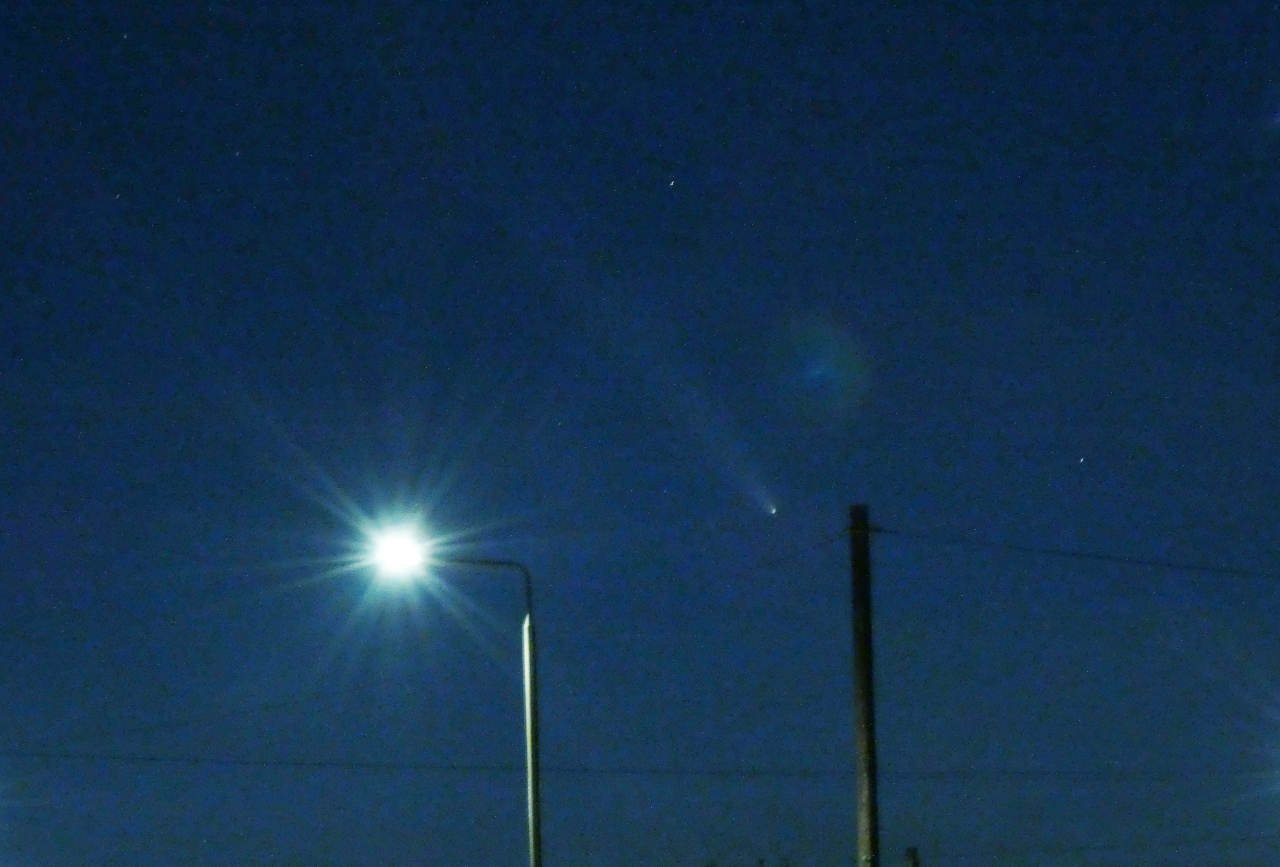This month has been a bit of a treat for sky watchers: a large display of aurora and a comet. The aurora occurred on 10 October; I was expecting it as it had been forecast some time in advance, and it was fortunately a clear, moonless night. When I first went to look at it, the sky appeared uniformly hazy and glowing; I was not sure that I was looking at aurora at all until I took some photographs and rushed back into the house to see what they looked like on a computer screen.
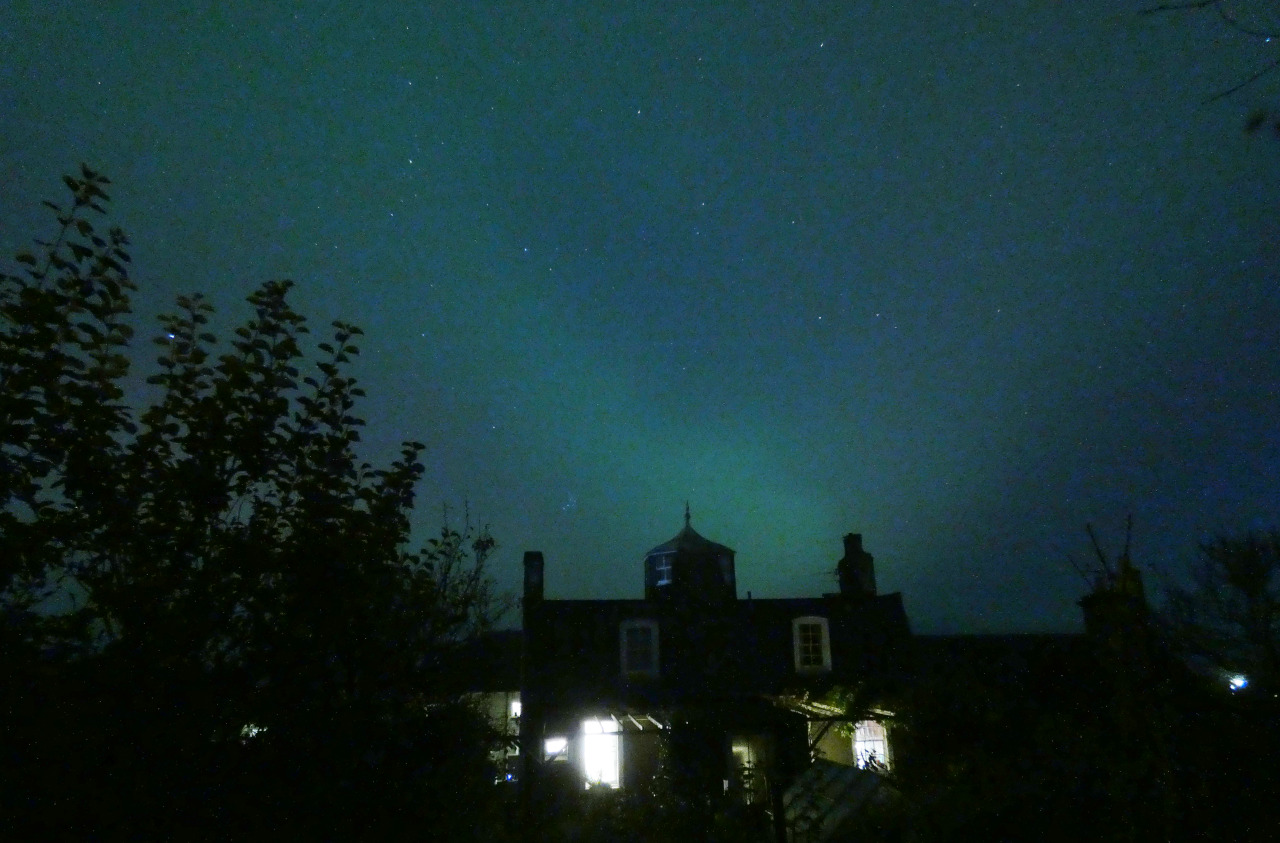
To get a photograph with anything on it at all I had to work out how to lock my camera (Panasonic Lumix DC-FZ82) in maximum aperture (f2.8), minimum shutter speed (4s) and maximum sensitivity (400 ASA — it will only do higher sensitivities for shorter exposures). The auto-focus was struggling, so after a few attempts I had to also work out how to switch to manual focus and fix the focus at +∞. Even with this all sorted out the pictures were quite dark, so I have had to load them into gimp and use the curves tool to brighten them up. That first picture is looking east; after a while the display in that direction got more interesting.
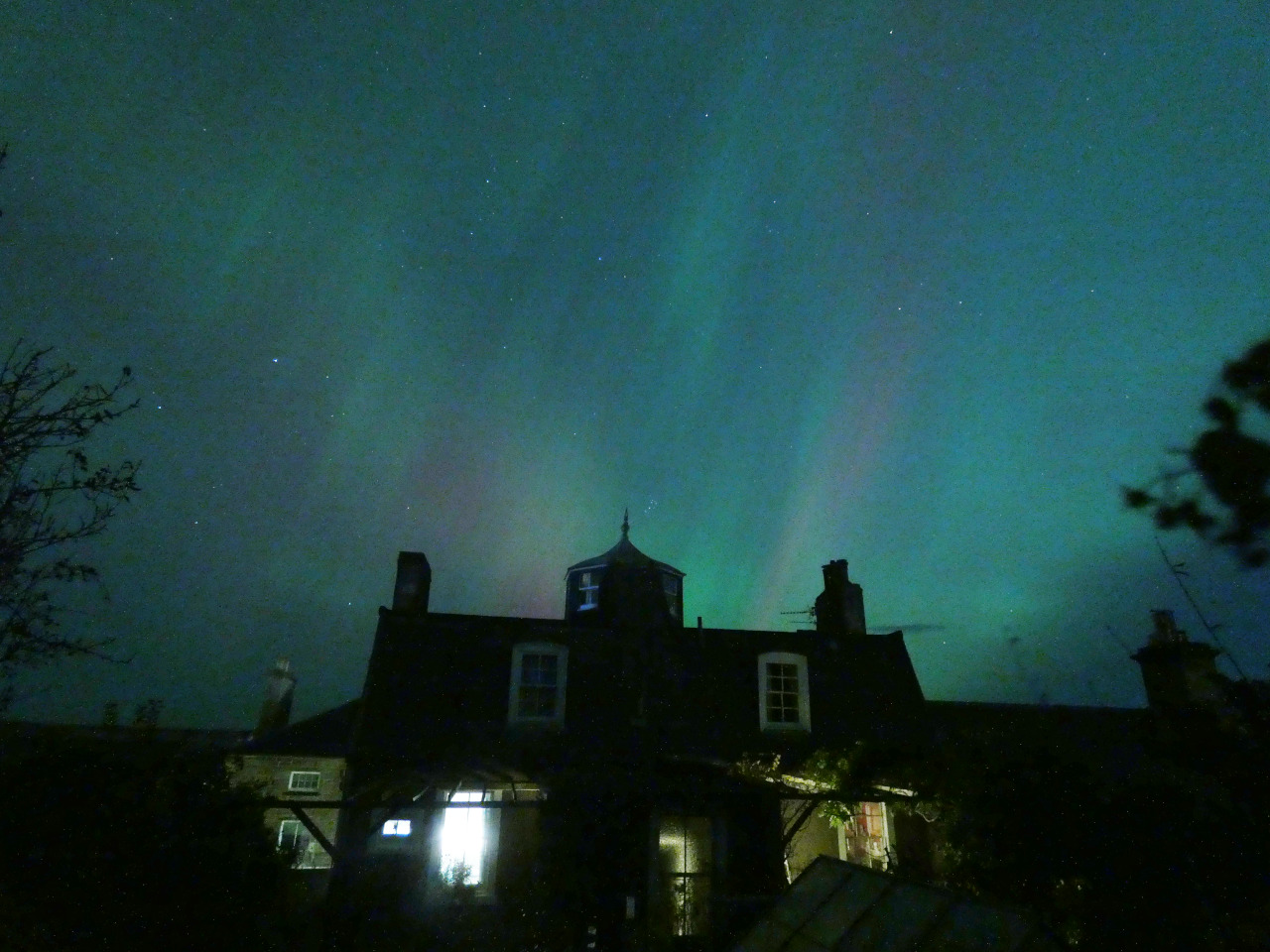
The aurora showed distinct structure and also showed pink colours as well as green. Astronomy fans will recognise the Pleiades just to the right of that silly pointy finial on the roof; the constellation Auriga to the left of the house and the constellation Perseus near the top centre of the photo. You can also infer that I was walking around the garden looking for different things that I could clamp the camera onto to hold it still.
After a while the brightest part of the display shifted to the west and became even more colourful:
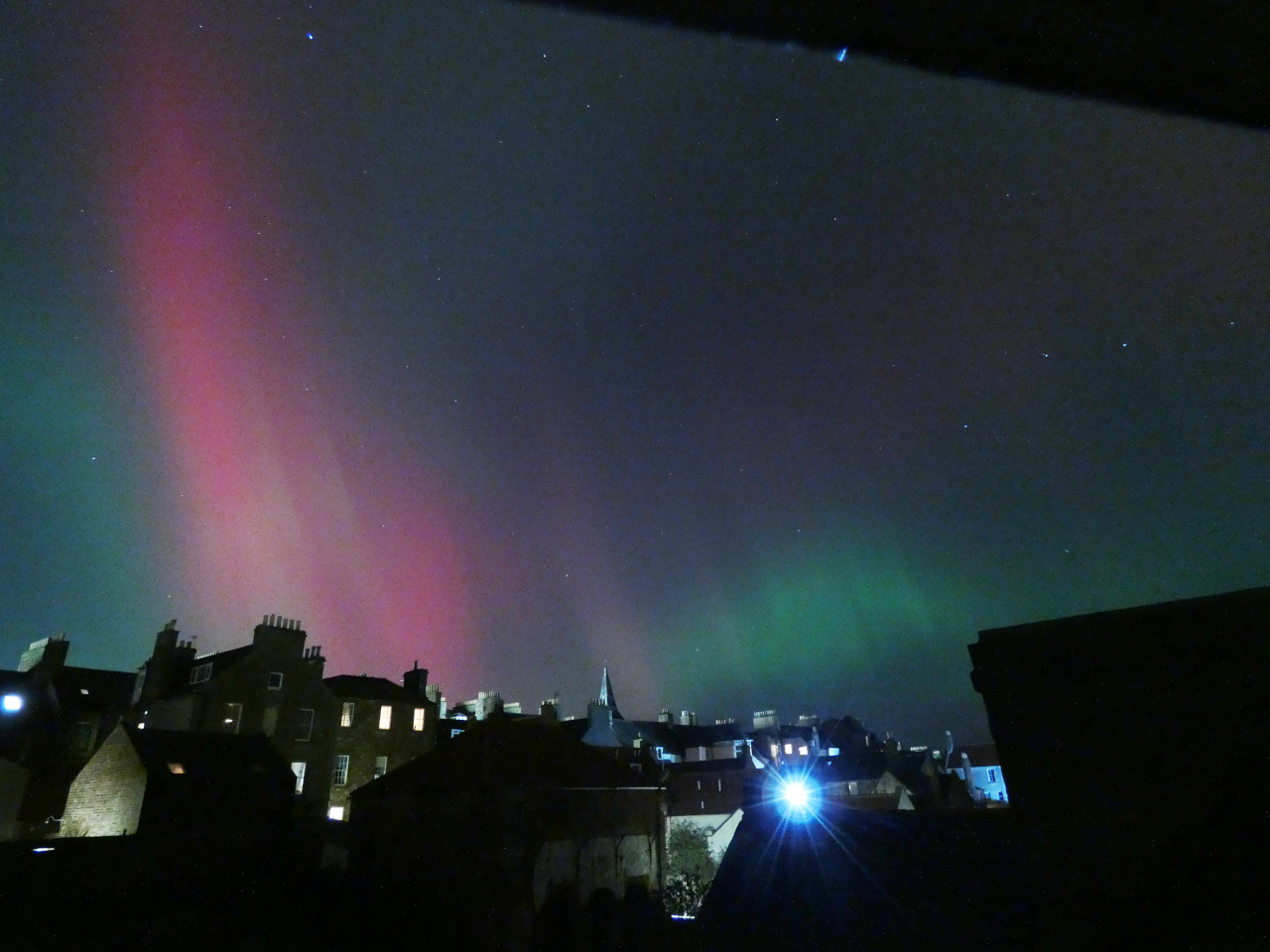
The four bright stars in a line on the right of the picture are the handle of the big dipper in Ursa Major. Completist readers of this blog will know that I have looked for the Aurora for many years (see here and here) but this is the first time I have seen and successfully photographed a big display: I felt that an important box had been ticked. I was pleased that the photos looked something like what I had seen by eye, although I notice from looking at the internet that people with new and expensive mobile phones seem to get more dramatic aurora photos with no effort at all; I think that sensor technology has advanced somewhat since the DC-FZ82 was designed.
I saw the comet (C/2023 A3 (Tsuchinshan–ATLAS)) some days later (14 October). I knew that it was low in the western sky after sunset but I had not had time to find a star chart with its exact position. You cannot see the western horizon very well from our house; as my last aurora photo shows, there are buildings on higher ground to the west. I therefore walked across town, ending up in a park with a good view west. I looked at the twilight arch for a good while, seeing nothing of interest. Just as I was about to give up the comet emerged from the twilight.
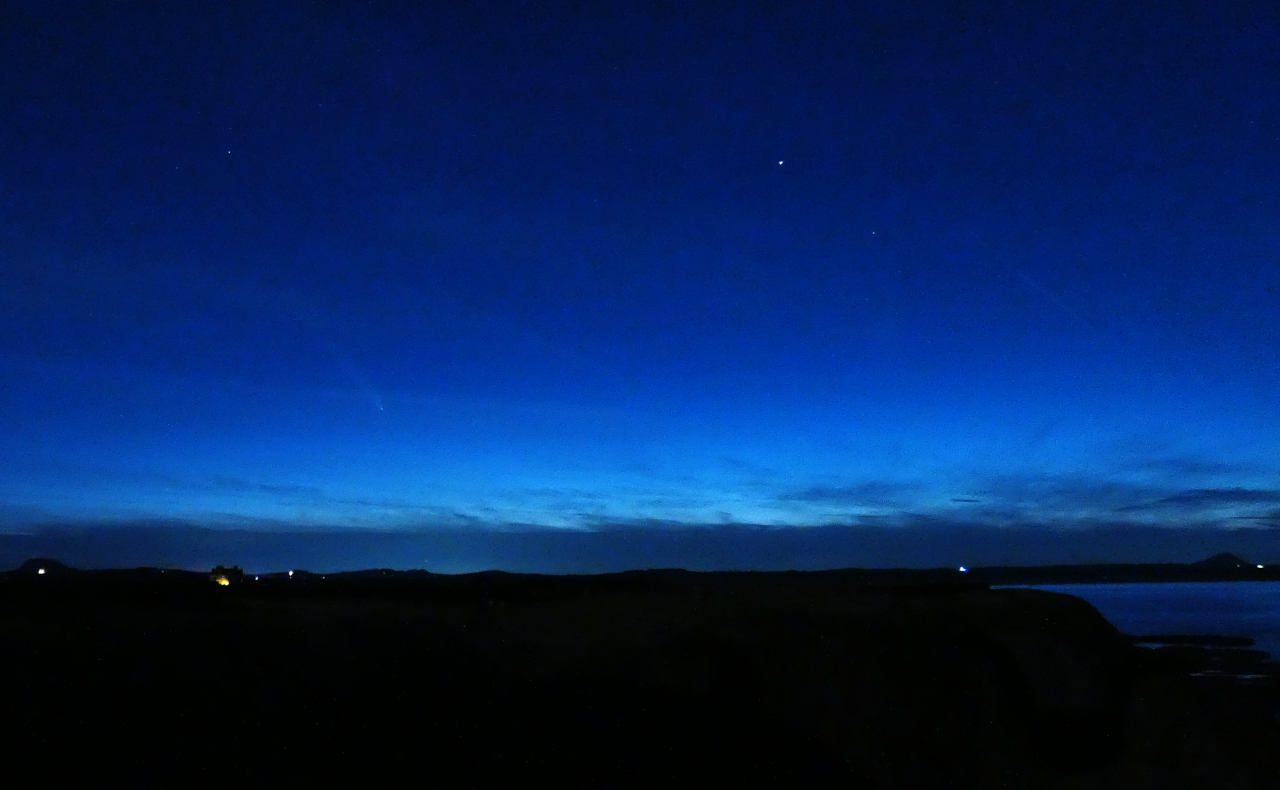
It really is there in the picture: just to the left of centre and to the right of the group of three bright lights on the horizon. Dunbar locals will recognise the igneous hills of Traprain Law on the extreme left and North Berwick Law on the extreme right, standing clear of the surrounding (mostly) sedimentary rocks. I was getting cold by this point so I headed home, stopping at a couple of places on the way to try for a more zoomed-in photo. This was the least-bad effort, despite the lens flare from that streetlight. (I did not have much choice of viewing angle as I had forgotten to take a tripod: I was relying on a park bench to hold the camera still.)
